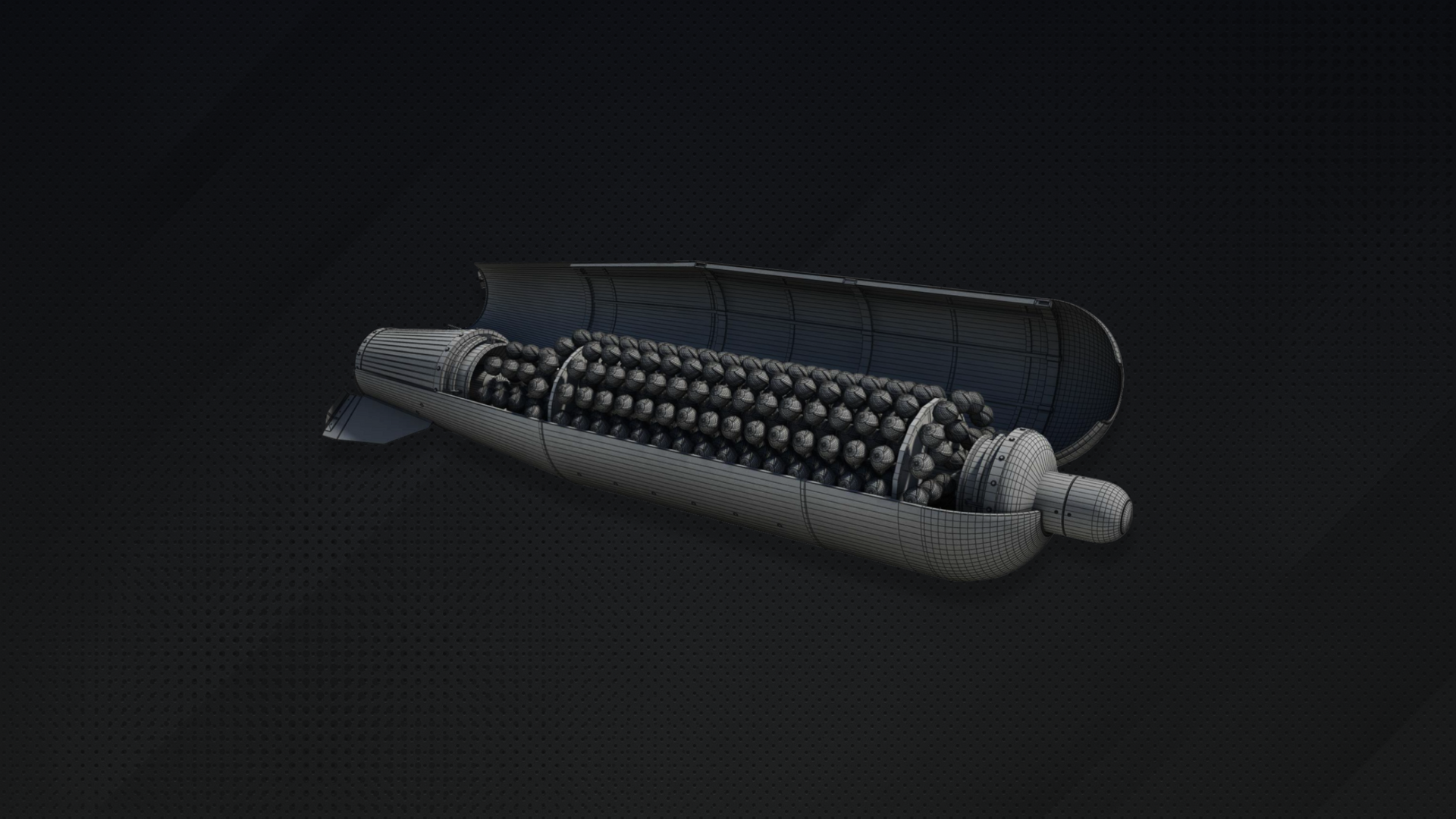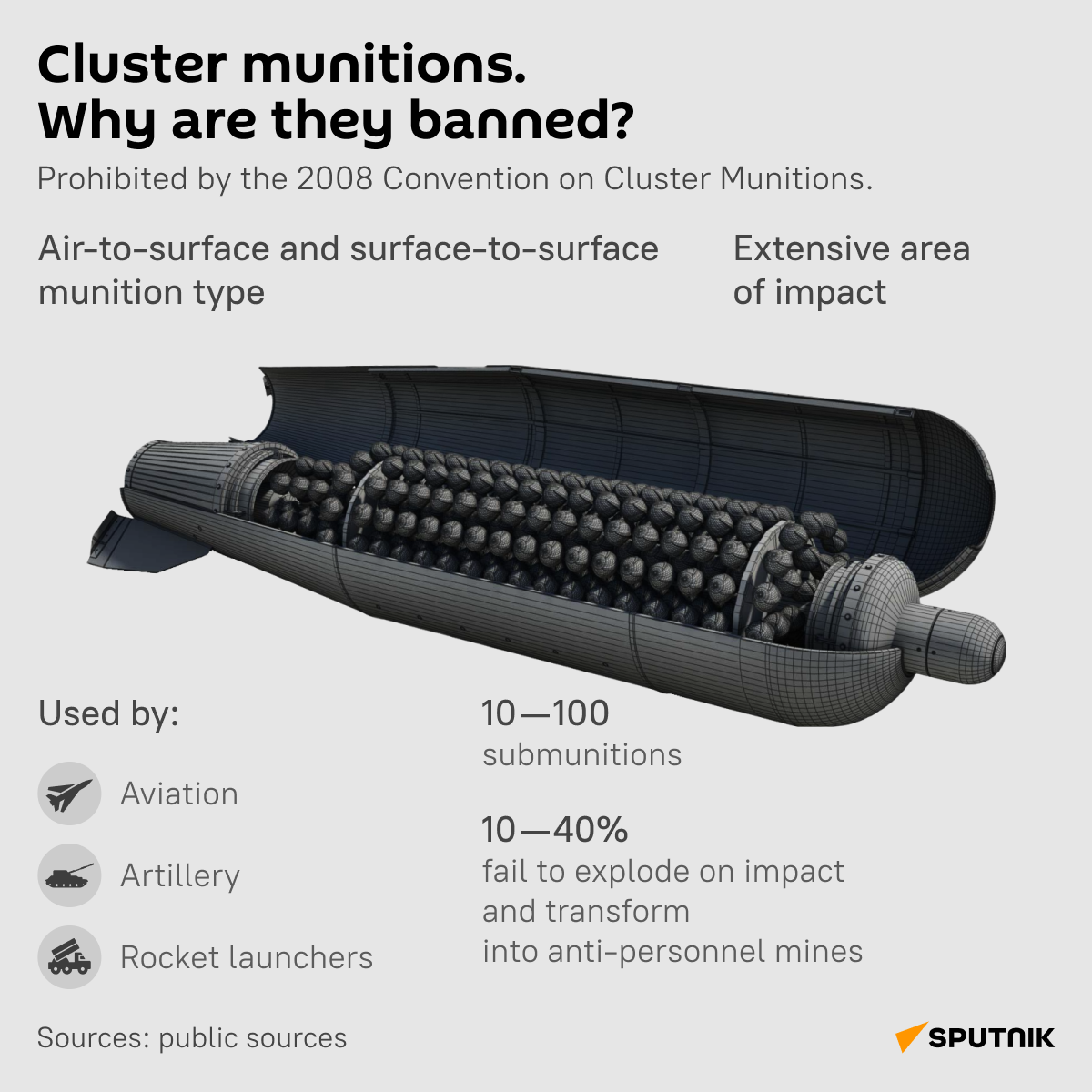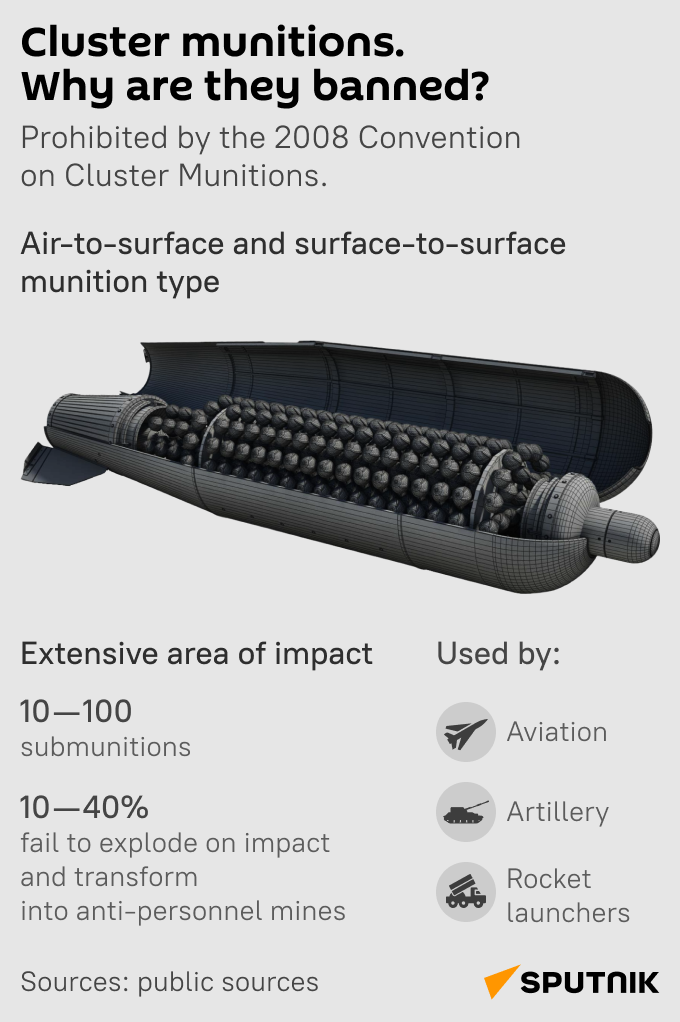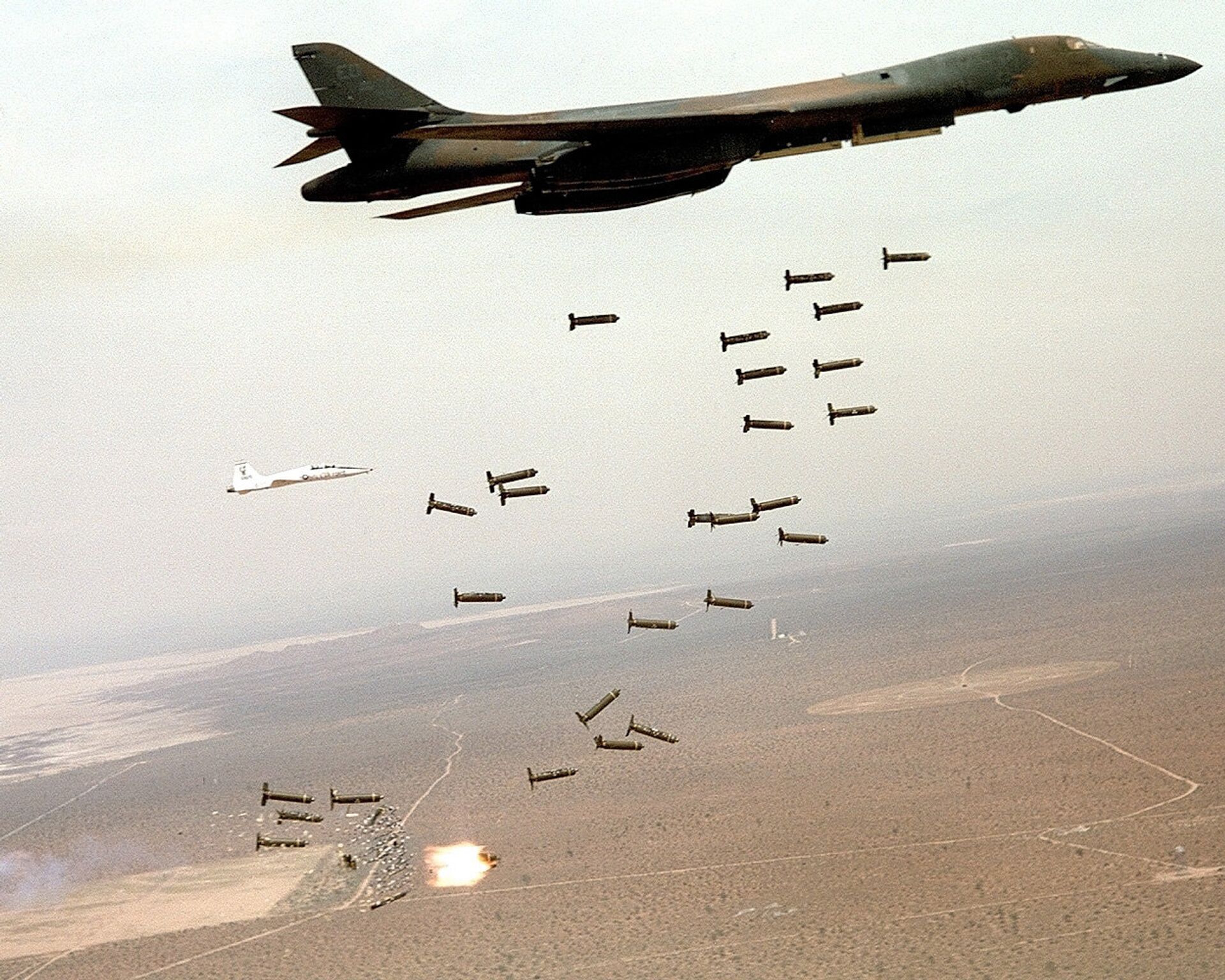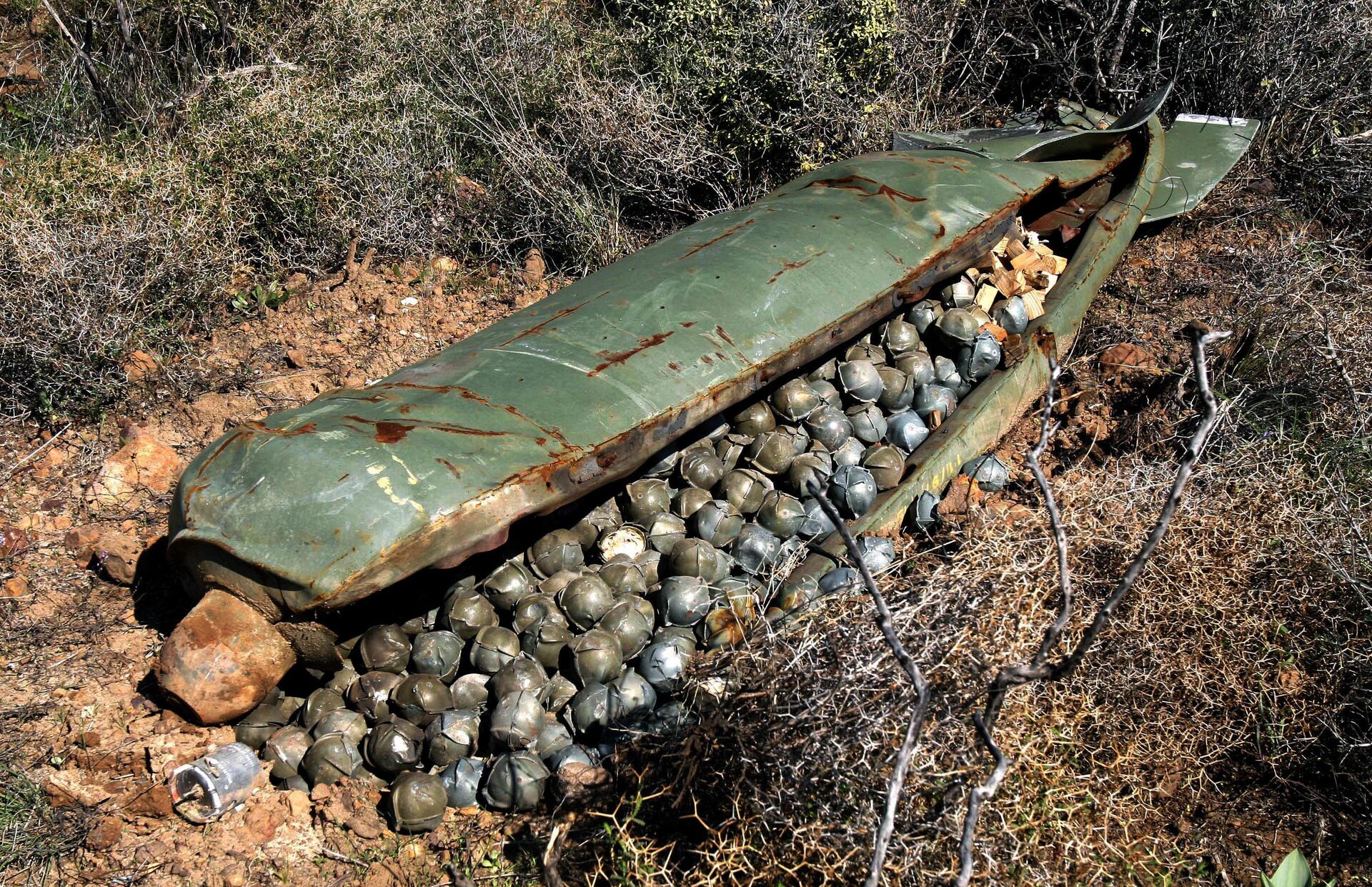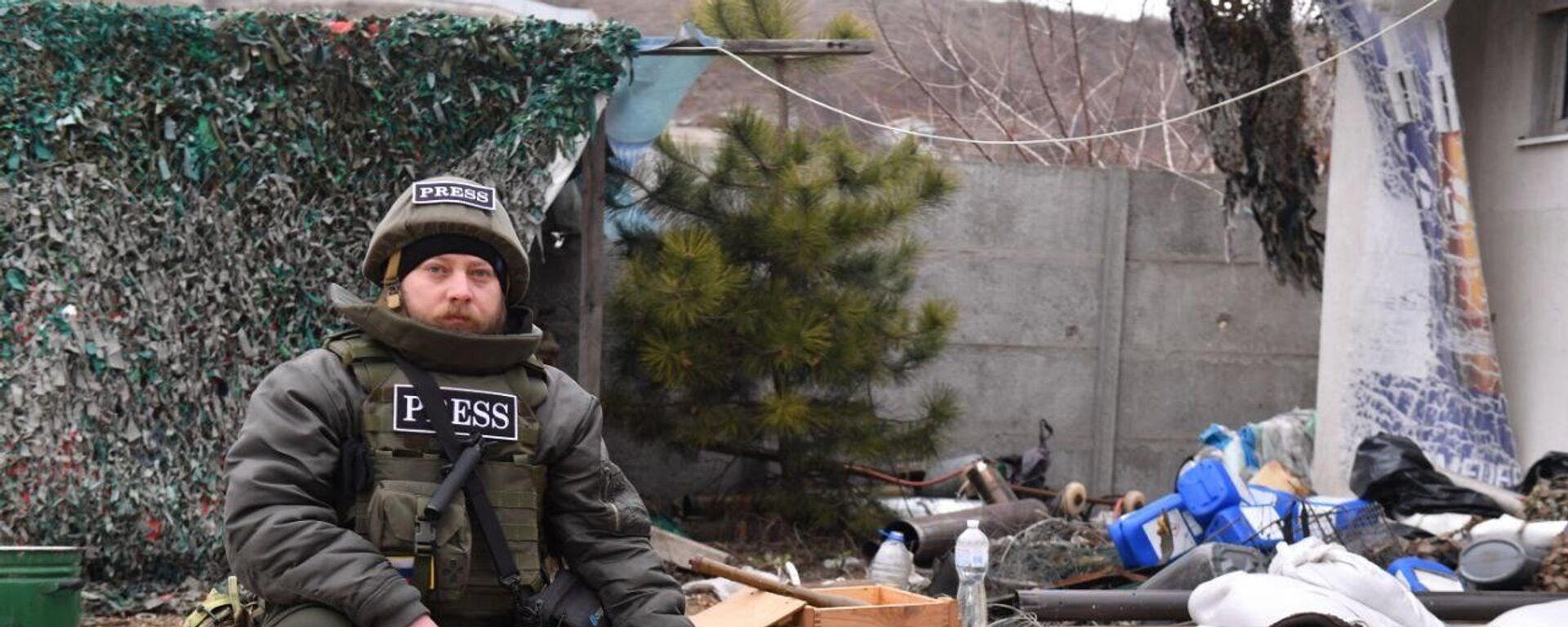https://sputniknews.in/20230829/why-are-cluster-munitions-banned-3907179.html
Why Are Cluster Munitions Banned?
Why Are Cluster Munitions Banned?
Sputnik India
Sputnik India explains what cluster munitions are, how they are used in combat, and why they are banned under the Convention on Cluster Munitions (CCM).
2023-08-29T15:50+0530
2023-08-29T15:50+0530
2023-08-29T15:51+0530
cluster munitions
war crimes
civilian casualties
ukraine armed forces
ukraine
russian armed forces
special military operation
volodymyr zelensky
nato
himars missile
https://cdn1.img.sputniknews.in/img/07e7/08/1d/3912607_0:0:2560:1440_1920x0_80_0_0_d7a30c4944b9e52c78589580f464b16e.png
Cluster munitions, also known as cluster bombs, are a type of explosive weapon that is widely controversial due to their indiscriminate nature and significant impact on civilian populations.The conflict in Ukraine has brought attention to the use of cluster munitions and their devastating consequences, especially after the United States, following lengthy discussions, have included cluster bombs in the new military aid package for Kiev on July 7.Sputnik India explains what exactly are cluster munitions and what is so dangerous about this type of weapon.What is a Cluster Munition?Cluster munitions are a specific type of weapon designed to disperse multiple explosive submunitions over a wide area.They are typically delivered from aircraft, artillery, or rocket systems. The primary purpose of cluster munitions is to target and neutralize enemy personnel, vehicles, or structures within the designated area. The submunitions within cluster munitions can vary in size and type, including fragmentation, blast, or even chemical or biological agents. They are designed to cause maximum damage and casualties within the targeted area. The dispersion of submunitions across a large area allows for a greater likelihood of hitting targets, but it also increases the risk of unintended harm to civilians and civilian infrastructure.Why Is Use of Cluster Munitions Prohibited?Cluster munitions have a destructive potential that extends beyond their initial use. While they may effectively neutralize enemy targets, they also pose significant risks to civilian populations, especially long after the conflict has ended. The consequences of cluster munitions and their unexploded remnants are severe:The economic and social impact of cluster munitions can be long-lasting, perpetuating the cycle of poverty and hindering the development of affected regions.Convention on Cluster Munitions (CCM)Recognizing the humanitarian impact and the need for international cooperation, the Convention on Cluster Munitions (CCM) was adopted on May 30, 2008, and entered into force on August 1, 2010. The CCM seeks to comprehensively address the problems posed by cluster munitions through a set of binding obligations on states parties. The CCM also establishes a framework for cooperation among states, clearance of contaminated areas, victim assistance, and the destruction of stockpiles.It also includes provisions for the provision of technical and financial assistance to affected states. Is Using Cluster Munitions a War Crime?Cluster munitions are not inherently against the international law. However, if cluster bombs are used against innocent civilians, it can be considered a violation of international law. To determine if a war crime was committed, it is essential to examine if the intended target was justified and if sufficient measures were undertaken to prevent harm to civilians.Which Countries Still Use Cluster Munitions?As of now, 123 countries have ratified the Convention on Cluster Munitions, demonstrating a global commitment to addressing the humanitarian consequences of cluster munitions. It's worth noting that some major military powers have not joined the treaty, including:Does Ukraine Use Cluster Munitions?Similarly, Ukraine is not a party to the Convention on Cluster Munitions: what's more, Kiev began using cluster munitions long before Russia launched its special military operation in February 2022. Back in 2014, the Ukrainian Armed Forces fired cluster munitions against the civilian population of Russian-speaking Donbass from multiple rocket launchers. Those bombs have remained with Ukraine since the Soviet times. In addition, the so-called 'Lepestok' mines that the Kiev regime used during the so-called "anti-terrorist operation" and is now using against civilians in the Donetsk and Lugansk People's Republics are the same "stuffing" for cluster bombs. The HIMARS MLRSs handed over to Kiev by Washington can also be equipped with missiles with cluster warheads. These are M30A1 shells, which contain 180,000 tungsten carbide balls. When bursting, they are capable of hitting live forces and lightly armored vehicles within a radius of about 120 meters. The Kiev regime also uses HIMARS cluster shells for remote mining of territory.Cluster bombs are primarily dangerous for units going on the assault - they are ineffective against troops in hiding. Armored vehicles can also suffer from such ammunition, but only if the shell comes close to a tank or APC. In the absence of a serious bomber aviation force of the Kiev regime, cluster bombs are unlikely to be a formidable weapon against Moscow's troops.
https://sputniknews.in/20230724/unesco-ifj-condemn-the-killing-of-sputnik-war-correspondent-demand-a-probe-3160810.html
ukraine
russia
us
Sputnik India
feedback.hindi@sputniknews.com
+74956456601
MIA „Rossiya Segodnya“
2023
Sputnik India
feedback.hindi@sputniknews.com
+74956456601
MIA „Rossiya Segodnya“
News
en_IN
Sputnik India
feedback.hindi@sputniknews.com
+74956456601
MIA „Rossiya Segodnya“
Sputnik India
feedback.hindi@sputniknews.com
+74956456601
MIA „Rossiya Segodnya“
cluster munitions, cluster bombs, convention on cluster munitions upsc, meaning of cluster munitions, ukraine cluster munitions, why are cluster munitions banned, convention on cluster munitions pdf, cluster munitions definition, cluster munitions manufacturers, convention on cluster munitions india, cluster munitions ban, what is cluster munitions, himars, m142 himars, himars rocket, himars rocket system, what are examples of cluster munitions, does russia use cluster munitions, are cluster munitions legal, what is a cluster munition,
cluster munitions, cluster bombs, convention on cluster munitions upsc, meaning of cluster munitions, ukraine cluster munitions, why are cluster munitions banned, convention on cluster munitions pdf, cluster munitions definition, cluster munitions manufacturers, convention on cluster munitions india, cluster munitions ban, what is cluster munitions, himars, m142 himars, himars rocket, himars rocket system, what are examples of cluster munitions, does russia use cluster munitions, are cluster munitions legal, what is a cluster munition,
Why Are Cluster Munitions Banned?
15:50 29.08.2023 (Updated: 15:51 29.08.2023) Sputnik India explains what cluster munitions are, how they are used in combat, and why they are banned under the Convention on Cluster Munitions (CCM).
Cluster munitions, also known as cluster bombs, are a type of explosive weapon that is widely controversial due to their indiscriminate nature and significant impact on civilian populations.
The
conflict in Ukraine has brought attention to the
use of cluster munitions and their devastating consequences, especially after the United States, following lengthy discussions, have included cluster bombs in the new military aid package for Kiev on July 7.
Sputnik India explains what exactly are cluster munitions and what is so dangerous about this type of weapon.
What is a Cluster Munition?
Cluster munitions are a specific type of weapon designed to disperse multiple explosive submunitions over a wide area.
They are typically delivered from aircraft, artillery, or rocket systems.
The primary purpose of cluster munitions is to target and neutralize enemy personnel, vehicles, or structures within the designated area.
These munitions consist of a main container that releases smaller submunitions, also known as bomblets or grenades, upon detonation or after reaching a predetermined altitude.
The submunitions within cluster munitions can vary in size and type, including fragmentation, blast, or even chemical or
biological agents. They are designed to cause maximum damage and casualties within the targeted area.
The dispersion of submunitions across a large area allows for a greater likelihood of hitting targets, but it also increases the risk of unintended harm to civilians and civilian infrastructure.
Why Is Use of Cluster Munitions Prohibited?
Cluster munitions have a destructive potential that extends beyond their initial use.
While they may effectively neutralize enemy targets, they also pose significant risks to civilian populations, especially long after the conflict has ended.
Many submunitions fail to explode upon impact, leaving behind unexploded ordnance (UXO) that can remain dangerous for years or even decades. These UXOs become de facto landmines, posing a constant threat to unsuspecting civilians, including children who may mistake them for toys.
The consequences of cluster munitions and their unexploded remnants are severe:
they can cause death, injury, and lifelong disabilities;
they hinder post-conflict recovery;
they obstruct the return of displaced populations;
they impede the use of land for agriculture or economic purposes.
The economic and social impact of cluster munitions can be long-lasting,
perpetuating the cycle of poverty and hindering the development of affected regions.
Convention on Cluster Munitions (CCM)
Recognizing the humanitarian impact and the need for international cooperation, the Convention on Cluster Munitions (CCM) was adopted on May 30, 2008, and entered into force on August 1, 2010.
The CCM seeks to comprehensively address the problems posed by cluster munitions through a set of binding obligations on states parties.
The CCM prohibits the use, production, transfer, and stockpiling of cluster munitions, as well as the assistance or encouragement of these activities.
The CCM also establishes a framework for cooperation among states, clearance of contaminated areas, victim assistance, and the destruction of stockpiles.
It also includes provisions for the provision of technical and financial assistance to affected states.
Is Using Cluster Munitions a War Crime?
Cluster munitions are not inherently against the international law. However, if cluster bombs are used against innocent civilians, it can be considered a
violation of international law.
To determine if a war crime was committed, it is essential to examine if the intended target was justified and if sufficient measures were undertaken to prevent harm to civilians.
Which Countries Still Use Cluster Munitions?
As of now, 123 countries have ratified the Convention on Cluster Munitions, demonstrating a global commitment to addressing the humanitarian consequences of cluster munitions.
It's worth noting that some major military powers have not joined the treaty, including:
Does Ukraine Use Cluster Munitions?
Similarly, Ukraine is not a party to the Convention on Cluster Munitions: what's more, Kiev began using cluster munitions long before Russia launched its special military operation in February 2022.
Back in 2014, the Ukrainian Armed Forces fired cluster munitions against the civilian population of Russian-speaking
Donbass from multiple rocket launchers. Those bombs have remained with Ukraine since the Soviet times.
The most horrific example in this regard was the March 14 tragedy last year, when neo-Nazis hit the center of Donetsk with a Tochka-U missile equipped with a cluster part. Twenty people were killed and about 30 others were injured in the blatant attack.
In addition, the so-called 'Lepestok' mines that the Kiev regime used during the so-called "anti-terrorist operation" and is now using against civilians in the
Donetsk and
Lugansk People's Republics are the same "stuffing" for cluster bombs.
The HIMARS MLRSs handed over to Kiev by Washington can also be equipped with missiles with cluster warheads. These are M30A1 shells, which contain 180,000 tungsten carbide balls. When bursting, they are capable of hitting live forces and lightly armored vehicles within a radius of about 120 meters.
The Kiev regime also uses HIMARS cluster shells for remote mining of territory.
Experts believe that the United States may send cluster bombs to Ukraine, as well as appropriate shells for MLRSs. With their help, Kiev and Washington expect to turn the situation on the front in favor of Ukraine's army.
Cluster bombs are primarily dangerous for units going on the assault - they are ineffective against troops in hiding. Armored vehicles can also suffer from such ammunition, but only if the shell comes close to a tank or APC. In the absence of a serious bomber aviation force of the Kiev regime, cluster bombs are unlikely to be
a formidable weapon against Moscow's troops.
Russian forces are also quite effective in destroying the enemy's artillery and striking ammunition storage sites and depots. Therefore, it is highly likely that the Ukrainian Armed Forces will use American cluster munitions precisely against civilians, as they have done before, fully adopting the tactics of the terrorists.
